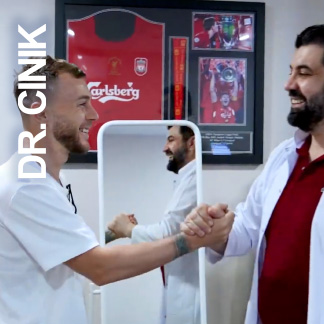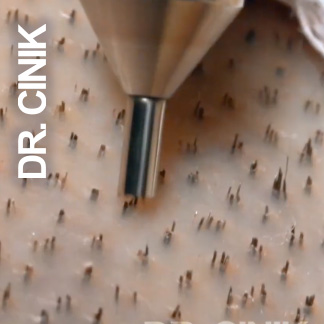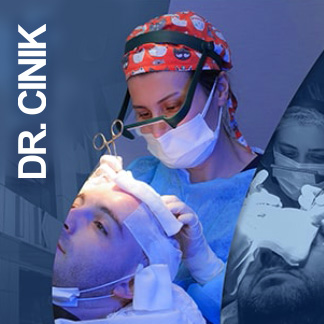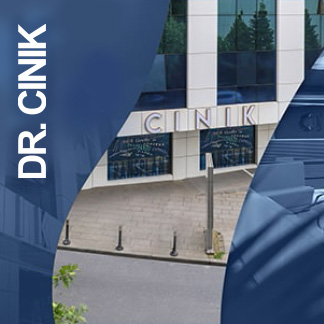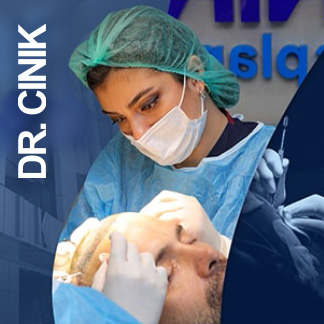
No Shave Hair Transplant
Social discretion during recovery period
Solution for specific cases
Expert medical guidance from Dr Cinik
+ 20 YEARS OF EXCELLENCE
GLOBAL LEADER
NATURAL RESULTS
WHY WE GENERALLY ADVISE AGAINST NO SHAVE HAIR TRANSPLANTS
Although it is technically possible to perform a no shave hair transplant, Dr Emrah Cinik generally advises against this approach for the vast majority of patients. Our position is based on rigorous medical criteria and aims to ensure the best possible results for each procedure.
Despite the apparent discretion advantage that a no shave hair transplant might offer, the considerably higher risks and lower success rate lead us to strictly limit this option to very specific and carefully selected cases.
The no shave hair transplant is particularly not recommended for patients with significant hair loss as it cannot achieve satisfactory density and may compromise graft integrity.
Our priority remains your safety and the quality of long-term results. That’s why we always recommend following the personalised advice of Dr Cinik and his medical team after a thorough assessment of your situation.

WHY IS HEAD SHAVING NECESSARY FOR A HAIR TRANSPLANT?
Shaving isn’t merely a preparatory step—it’s a key factor in the success of a hair transplant for several essential reasons:
Surgical precision is considerably improved when the surgeon can clearly visualise the scalp, allowing for optimal extraction and implantation of the follicles.
Without shaving, the number of grafts that can be harvested and then transplanted is rather limited, which directly impacts the final density and overall aesthetic result.
Shaving also facilitates rigorous post-operative monitoring, allowing any potential complications to be quickly identified and addressed.
Post-operative care protocols are much easier to apply to a shaved scalp, thus improving the survival rate of grafts and accelerating healing.
For these fundamental technical and medical reasons, Dr Cinik almost invariably recommends a full-shave transplant to ensure optimal results.

DR CINIK'S PROFESSIONAL OPINION
Due to substantially lower success rates, Dr Emrah Cinik generally does not recommend no shave hair transplants. This position is based on strict medical principles and extensive clinical experience.
Nevertheless, some patients insist on this option, primarily for social or professional discretion. In very specific cases and after thorough diagnosis, Dr Cinik may agree, but these situations remain quite exceptional.
Our approach revolves around a fundamental principle: we never offer procedures that might compromise the quality of results or our patients’ health, even if these options might seem more attractive in the short term.
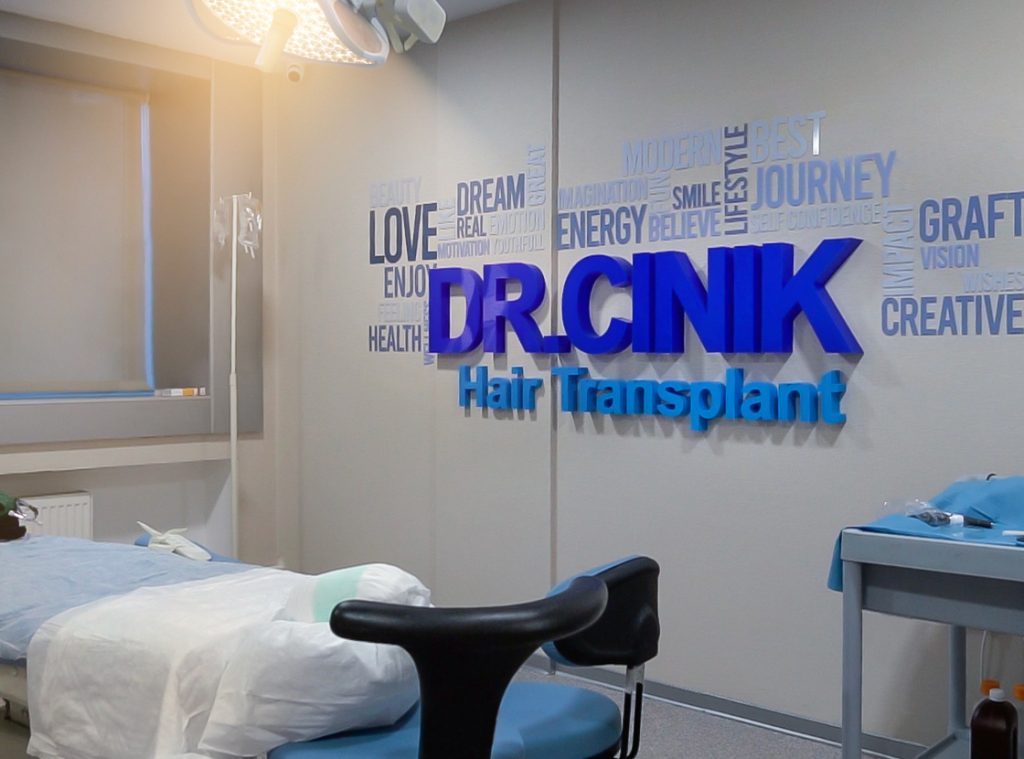
YOUR SAFETY AND HEALTH ARE OUR PRIORITY
At Dr Emrah Cinik’s clinic, we have established an unwavering guideline: the wellbeing and health of our patients come before any other consideration.
Any protocol likely to compromise these fundamental values is systematically ruled out. A no shave hair transplant, in many cases, can significantly increase the risks to your hair grafts, which explains our reluctance to offer this option as a general approach.
Our medical team always prioritises the approach offering the best balance between safety and efficacy, even if this sometimes means advising against certain options you might initially prefer.
This philosophy, centred on medical excellence and long-term results, guides all our decisions and recommendations.

PRE-OPERATIVE EXAMINATION: THE KEY TO A SUCCESSFUL TRANSPLANT
Our team of experts, with several years of experience in the field of hair transplants, meticulously analyses your situation before you even book an appointment.
These highly qualified professionals pay particular attention to the smallest details to guide you towards the most suitable solution for your specific case.
If you wish to consider a no shave hair transplant, we must conduct a thorough analysis of your hair condition and obtain formal approval from our medical team.
This rigorous pre-operative assessment process is an essential step to ensure not only the success of the procedure but also your complete long-term satisfaction.

WHICH METHOD IS USED FOR NO SHAVE HAIR TRANSPLANTS OR PARTIAL SHAVING?
In the rare cases where a no shave hair transplant is approved, two techniques may be considered, each requiring particular expertise:
Manual FUE uses a non-motorised micro-punch to gently harvest follicular units. These grafts are then implanted into thinning areas after creating micro-channels in the scalp. This approach requires exceptional precision and considerable experience to navigate between existing hairs.
The DHI (Direct Hair Implantation) technique employs a special instrument called the Choi pen, allowing direct implantation of follicles without prior incisions. Particularly suited to precision procedures, this method offers a potential advantage for no shave transplants in specific, limited areas.
Regardless of the chosen technique, a no shave hair transplant requires superior dexterity and a considerably higher level of expertise than a standard procedure.

THE EXPERIENCE AND METICULOUSNESS REQUIRED FOR NO SHAVE HAIR TRANSPLANTS
If in certain very specific cases a no shave hair transplant can be considered, it is absolutely essential to entrust it to a medical team led by an exceptionally experienced surgeon.
This particularly delicate procedure requires microscopic precision and impeccable technical mastery to navigate between existing hairs without damaging them, whilst ensuring optimal implantation of grafts.
Dr Cinik, with his vast experience and specialised training, is one of the few surgeons capable of accurately assessing whether this approach is viable in your particular case, and executing it with the required precision.
Only this in-depth expertise and meticulous attention to detail can make the difference between a disappointing result and a successful hair transformation, even in complex cases of no shave hair transplants.

WHAT ARE THE DISADVANTAGES OF A NO SHAVE HAIR TRANSPLANT?
The no shave hair transplant presents several major disadvantages that explain our cautious approach:
Increased risk to healthy follicles: Manipulating surgical instruments between existing hairs can damage surrounding healthy follicles, compromising your natural hair capital.
Complications in post-operative care: Long hair makes cleaning the grafted area, removing crusts, and applying essential care for graft survival significantly more difficult.
Amplified “shock loss” phenomenon: Temporary hair loss after the procedure (shock loss) can affect surrounding long hairs, considerably reducing the aesthetic advantage sought with this technique.
Danger to transplanted grafts: Long hairs can become entangled with newly implanted grafts, risking dislodging them before they are fully secured.
These important risk factors can seriously compromise the success of the procedure and explain why Dr Cinik generally recommends a more conventional approach to ensure optimal results.

THE ADVANTAGES OF A NO SHAVE HAIR TRANSPLANT
Despite our medical reservations, we recognise that the no shave hair transplant presents certain advantages for very specific cases:
Social and professional discretion: For some patients, particularly those whose profession demands a constant appearance, the ability to conceal the procedure represents a considerable advantage.
Option for limited areas: In the case of a minor correction or localised touch-up, a no shave procedure can sometimes offer a good compromise between discretion and efficacy.
Adaptation to female needs: Female patients suffering from a thinning hairline can particularly benefit from this approach, allowing discreet restoration whilst maintaining their long hair.
These advantages, whilst real, must always be carefully weighed against the increased risks and potentially lower success rate of this technique compared to the standard approach.

Obtain Dr Cinik’s professional opinion on the best approach for your specific case. Our team will guide you towards the optimal solution for your unique hair situation.
OUR VIDEOS
No Shave Hair Transplant: An Option to Consider with Caution
Are you considering a hair transplant but dreading the complete shaving phase? Wondering if it’s possible to benefit from a hair transplant whilst keeping your long hair? This page presents Dr Emrah Cinik’s objective approach regarding no shave hair transplants.
A Clear Medical Position Based on Experience
Dr Cinik adopts a nuanced but clear position: although technically feasible in some very specific cases, the no shave hair transplant is generally not recommended for most patients. This position isn’t arbitrary but founded on years of clinical experience and the desire to offer the best possible results to each patient.
Why Does Shaving Make the Difference?
Shaving the scalp before a hair transplant isn’t simply an aesthetic convention, but a fundamental technical step that directly influences the quality of results:
- It allows perfect visualisation of donor and recipient areas
- It facilitates precise extraction of follicular units
- It optimises graft positioning during implantation
- It enables achieving maximum density in areas to be treated
- It considerably simplifies essential post-operative care
Profile of Potential Candidates for a No Shave Hair Transplant
In the rare cases where a no shave hair transplant can be considered, the patient must generally present the following characteristics:
- Very limited hair loss requiring few grafts (typically fewer than 1,500)
- Sufficiently long hair (minimum 5 cm) to conceal the donor area
- An abundant donor area allowing selective extraction
- Realistic expectations regarding the density obtained
- A clear understanding of additional risks and limitations
Our Commitment: Offering You the Best Option for Your Case
Whether you’re ultimately a candidate for a no shave hair transplant or opt for a conventional approach, our priority remains the same: offering you the best possible results based on your unique hair situation.
Dr Cinik and his team are committed to providing an honest and transparent assessment, putting your health and the quality of results at the forefront of every recommendation. In some cases, this may mean advising against an option you might have initially preferred, but our ultimate goal remains your long-term satisfaction.
Contact us today for a personalised consultation and discover the approach that will best suit your particular situation.



